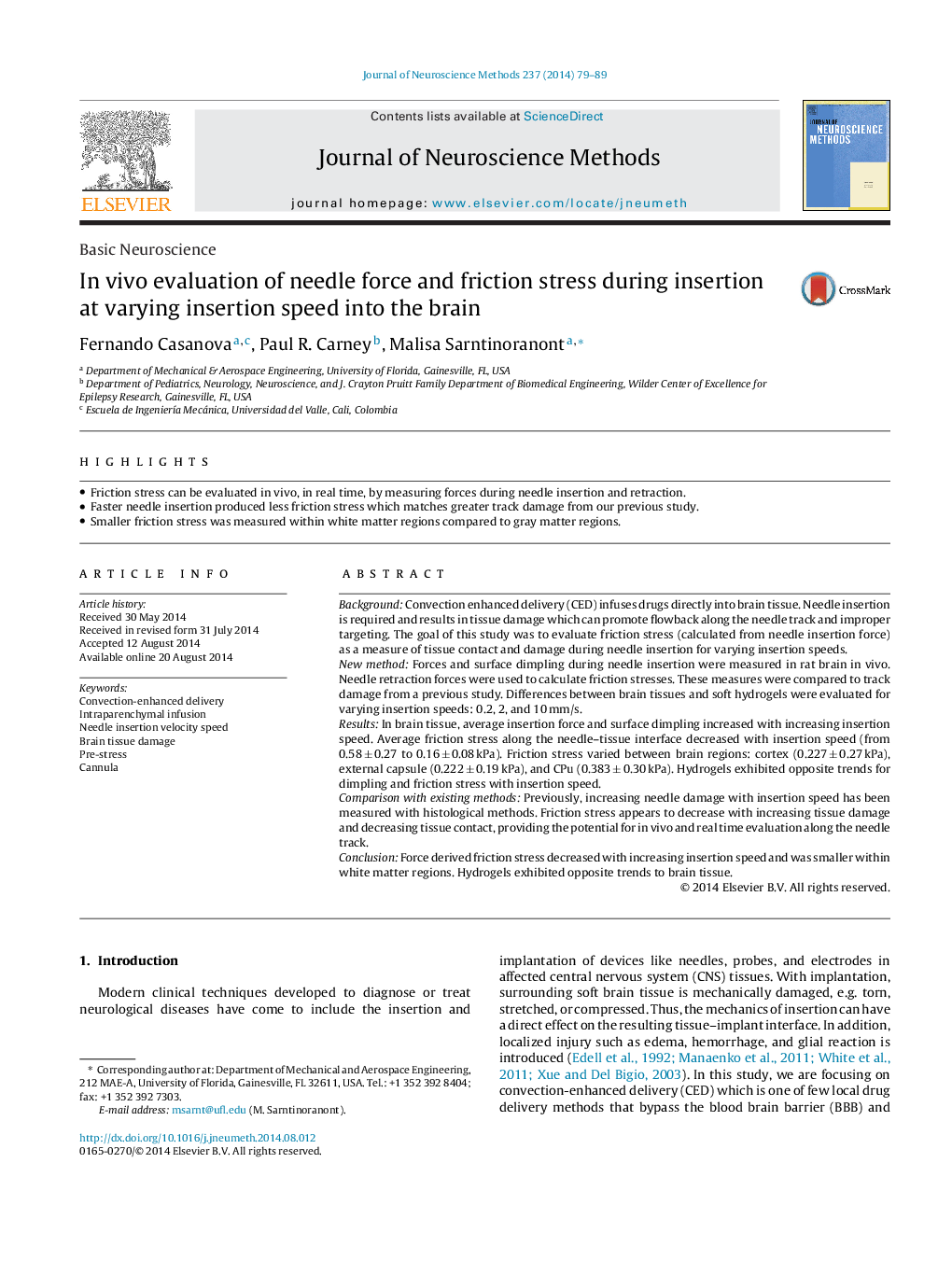| کد مقاله | کد نشریه | سال انتشار | مقاله انگلیسی | نسخه تمام متن |
|---|---|---|---|---|
| 6268465 | 1614632 | 2014 | 11 صفحه PDF | دانلود رایگان |
- Friction stress can be evaluated in vivo, in real time, by measuring forces during needle insertion and retraction.
- Faster needle insertion produced less friction stress which matches greater track damage from our previous study.
- Smaller friction stress was measured within white matter regions compared to gray matter regions.
BackgroundConvection enhanced delivery (CED) infuses drugs directly into brain tissue. Needle insertion is required and results in tissue damage which can promote flowback along the needle track and improper targeting. The goal of this study was to evaluate friction stress (calculated from needle insertion force) as a measure of tissue contact and damage during needle insertion for varying insertion speeds.New methodForces and surface dimpling during needle insertion were measured in rat brain in vivo. Needle retraction forces were used to calculate friction stresses. These measures were compared to track damage from a previous study. Differences between brain tissues and soft hydrogels were evaluated for varying insertion speeds: 0.2, 2, and 10 mm/s.ResultsIn brain tissue, average insertion force and surface dimpling increased with increasing insertion speed. Average friction stress along the needle-tissue interface decreased with insertion speed (from 0.58 ± 0.27 to 0.16 ± 0.08 kPa). Friction stress varied between brain regions: cortex (0.227 ± 0.27 kPa), external capsule (0.222 ± 0.19 kPa), and CPu (0.383 ± 0.30 kPa). Hydrogels exhibited opposite trends for dimpling and friction stress with insertion speed.Comparison with existing methodsPreviously, increasing needle damage with insertion speed has been measured with histological methods. Friction stress appears to decrease with increasing tissue damage and decreasing tissue contact, providing the potential for in vivo and real time evaluation along the needle track.ConclusionForce derived friction stress decreased with increasing insertion speed and was smaller within white matter regions. Hydrogels exhibited opposite trends to brain tissue.
Journal: Journal of Neuroscience Methods - Volume 237, 30 November 2014, Pages 79-89
